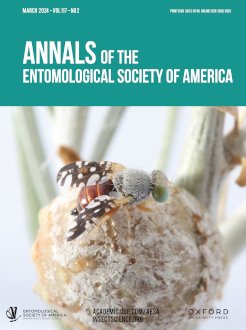Insect-induced galls are novel structures that serve as habitat to whole communities of associate arthropods that include predators, parasitoids, and inquilines. Galling insects are generally under-described, but their associate communities, which can include many specialist organisms, are virtually unknown, particularly in the southwest United States. Aciurina bigeloviae (Cockerell 1890) and Aciurina trixaCurran 1932 (Diptera: Tephritidae) are unusually common and abundant galling flies in New Mexico. The 2 species are sister and occur in sympatric areas but have distinct gall morphologies. We reared all arthropods from 3,800 galls from 14 sites in the northern and central regions of the state and as a result characterized the complete communities of both species, including barcode sequences and eclosion phenology. We also investigate interactions of A. trixa galls with the abundant inquiline weevil Anthonomus cycliferus Fall 1913 (Coleoptera: Circulionidae) and find no measurable effect of inquiline abundance on the size of the emerged adult fly or gall. The total species count is 24 and includes 6 guilds; both A. bigeloviae and A. trixa communities are richer and more complex than other documented Tephritidae–Asteraceae galling systems. This study highlights the potential of galling insects as ecosystem engineers to maintain large, rich, and multi-trophic communities.
Las agallas inducidas por insectos son estructuras únicas utilizadas como hábitat para comunidades enteras de artrópodos que incluyen depredadores, parasitoides e inquilinos. Los insectos inductores de agallas son poco conocidos en general, pero las comunidades asociadas que pueden incluir muchos organismos especializados son casi todas desconocidas, particularmente en la región suroeste de los Estados Unidos. Aciurina bigeloviae (Cockerell 1890) y Aciurina trixa Curran 1932 (Diptera: Tephritidae) son moscas de agallas inusualmente comunes y abundantes en el estado de Nuevo México. Las dos especies son hermanas y ocurren en regiones simpátricas, pero tienen morfologías de agallas distintas. Criamos todos los artrópodos de 3800 agallas de 14 sitios en las regiones del norte y central de Nuevo México, y como resultado caracterizamos las comunidades completas de las dos especies, incluyendo código de barras y fenología de eclosión. Además, investigamos las interacciones de agallas de A. trixa con el gorgojo Anthonomus cycliferus Fall 1913 (Coleoptera: Circulionidae), un inquilino abundante, y no encontramos ningún efecto mensurable en la abundancia del inquilino con el tamaño de la mosca inductora o de la agalla. El recuento total de las especies es 24 e incluye 6 gremios. Ambas comunidades de moscas, A. bigeloviae y A. trixa son más ricas y complejas que las de otros sistemas de agallas Tephritidae-Asteraceae documentados. Este estudio destaca el potencial de insectos inductores de agallas como ingenieros de ecosistemas para mantener comunidades grandes, ricas y multitróficas.
Graphical Abstract







